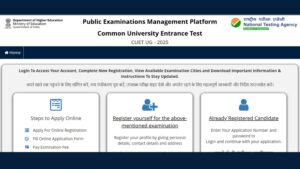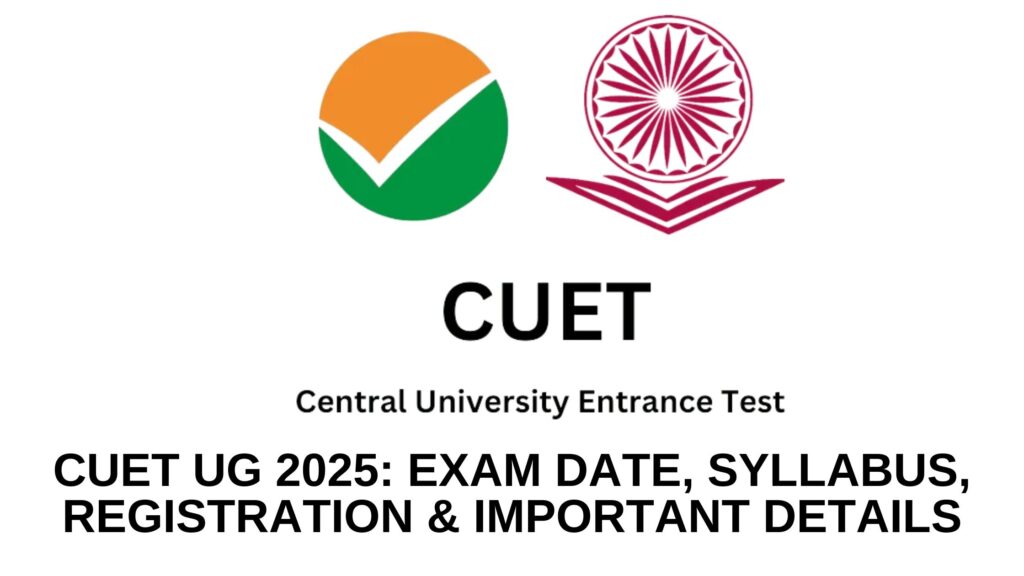The Common University Entrance Test Undergraduate (CUET UG) 2025 is a pivotal examination for students aspiring to secure admission to various undergraduate programs across numerous central, state, and private universities in India.
Conducted by the National Testing Agency (NTA), CUET UG serves as a unified platform, streamlining the admission process and ensuring a fair evaluation of candidates nationwide.
Exam Pattern
CUET UG 2025 is structured into four distinct sections:
-
Section IA – Languages: This section assesses proficiency in 13 languages, including English, Hindi, Assamese, Bengali, Gujarati, Kannada, Malayalam, Marathi, Odia, Punjabi, Tamil, Telugu, and Urdu. Candidates are required to attempt 40 questions out of 50 in their chosen language within 45 minutes.
-
Section IB – Additional Languages: An optional section offering 20 languages such as French, German, Japanese, and others. Similar to Section IA, 40 out of 50 questions must be attempted in 45 minutes.
-
Section II – Domain-Specific Subjects: Comprising 27 subjects like Accountancy, Biology, Chemistry, and more, this section allows candidates to choose subjects relevant to their desired undergraduate program. Each subject requires answering 40 out of 50 questions within 45 minutes.
-
Section III – General Test: Evaluates general knowledge, current affairs, general mental ability, numerical ability, and quantitative reasoning. Candidates must attempt 50 questions out of 60 in 60 minutes.
Download AKTU Previous paper
Syllabus Overview
The syllabus for CUET UG 2025 aligns closely with the NCERT curriculum for classes XI and XII. Here’s a breakdown of key subjects and their focal topics:
-
Languages (Sections IA & IB): Focus on reading comprehension, literary aptitude, and vocabulary.
-
Domain-Specific Subjects:
-
Accountancy: Accounting principles, journal entries, financial statements.
-
Biology: Cell structure, genetics, ecology.
-
Chemistry: Atomic structure, chemical bonding, thermodynamics.
-
Economics: Microeconomics concepts like consumer behavior, macroeconomic indicators such as national income, money and banking, and economic reforms.
-
-
General Test (Section III): Covers general knowledge, current affairs, general mental ability, numerical ability, and quantitative reasoning.
Detailed CUET UG 2025 Exam Structure & Syllabus
The following table provides a comprehensive overview of the CUET UG 2025 exam structure:
| Section | Subjects/Tests | Number of Questions | Questions to be Attempted | Duration | Key Topics Covered |
|---|---|---|---|---|---|
| Section IA | 13 Languages (English, Hindi, Assamese, Bengali, Gujarati, Kannada, Malayalam, Marathi, Odia, Punjabi, Tamil, Telugu, Urdu) | 50 | 40 | 45 minutes | Reading comprehension, literary aptitude, vocabulary, grammar, verbal reasoning |
| Section IB | 20 Additional Languages (French, German, Spanish, Japanese, Russian, Chinese, etc.) | 50 | 40 | 45 minutes | Same as Section IA |
| Section II | 27 Domain-Specific Subjects (Choose as per course requirement) | 50 per subject | 40 per subject | 45 minutes per subject | Subject-specific topics (See breakdown below) |
| Section III | General Test | 60 | 50 | 60 minutes | General knowledge, current affairs, logical reasoning, numerical ability, data interpretation, quantitative reasoning |

Domain-Specific Subject-Wise Topics (Section II)
| Subject | Important Topics Covered |
|---|---|
| Accountancy | Accounting principles, journal entries, financial statements, partnership firms, company accounts, financial statement analysis |
| Biology | Cell structure, genetics, ecology, biodiversity, human physiology, plant physiology |
| Chemistry | Atomic structure, chemical bonding, thermodynamics, organic chemistry, coordination compounds |
| Physics | Mechanics, thermodynamics, electromagnetism, optics, modern physics |
| Mathematics | Algebra, calculus, probability, coordinate geometry, trigonometry, statistics |
| Economics | Microeconomics (consumer behavior, demand & supply), macroeconomics (national income, money & banking, economic reforms) |
| History | Ancient, medieval, and modern Indian history, world history, important events, freedom struggle |
| Political Science | Indian Constitution, governance, democracy, international relations, political ideologies |
| Geography | Physical geography, human geography, environment, maps and geographical techniques |
| Business Studies | Management principles, business finance, marketing, entrepreneurship |
| Psychology | Learning & memory, intelligence, social psychology, personality theories |
| Sociology | Social institutions, social change, culture & identity, globalization |
| Computer Science | Programming concepts, database management, networking, algorithms, cybersecurity |
| Environmental Science | Ecosystems, biodiversity conservation, sustainable development, environmental issues |
| Legal Studies | Indian legal system, constitutional law, criminal & civil law, human rights |
CUET UG 2025 Important Dates
| Event | Date |
|---|---|
| CUET UG 2025 Registration Start | March 1, 2025 |
| CUET UG 2025 Registration End | March 22, 2025 (till 11:50 PM) |
| Fee Payment Deadline | March 23, 2025 |
| Application Correction Window | March 24 – March 26, 2025 |
| CUET UG 2025 Admit Card Release | To be announced |
| CUET UG 2025 Exam Dates | May 8 – June 1, 2025 |
| Official Notification | Download here |
| CUET UG 2025 Result Declaration | To be announced |
Preparation Tips
-
Understand the Syllabus: Thoroughly review the syllabus for each chosen subject to identify key topics.
-
Practice Regularly: Engage in consistent practice through mock tests and previous year question papers to enhance time management skills.
-
Stay Updated: For the General Test section, keep abreast of current affairs by reading newspapers, magazines, and reputable online sources.
-
Time Management: Develop a structured study plan allocating specific time slots to each subject, ensuring comprehensive coverage.
Read more about CUET PG 2025
By adhering to a disciplined study regimen and understanding the exam structure, candidates can approach CUET UG 2025 with confidence, paving the way for successful admission into their desired undergraduate programs.


